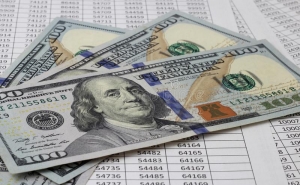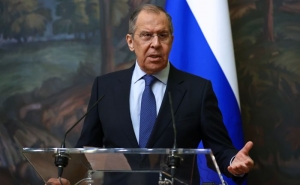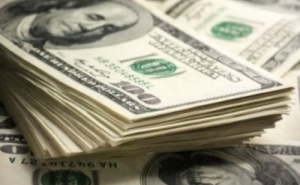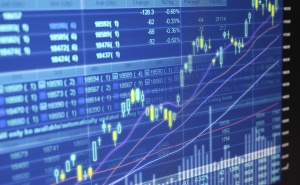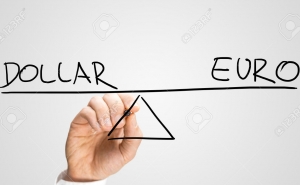US Dollar - Not American!

Today, few people have heard of Christopher Ter-Serobyan, but somehow everybody is perfectly familiar with the green colour of the dollar. So ... the 70s of the 19th century were marked by rapid development of photography. This in turn allowed the counterfeiters and particularly adventurous individuals in the United States to easily reproduce black and white banknotes, in which the green color was applied only at the edges and in a minimum amount. In America, a serious question arose about how to protect their own population from such "dealers". Green paint, incidentally, has already been purchased, so the experts decided to use it as the base color of the national currency. Banknote today is far from being green, rather, a green with a touch of pink, orange and so on.
Meanwhile, the creator of this color, which can not be forged,was a young talented chemist Christopher Ter-Serobyan, who in 1854 was invited to America from Istanbul to make it impossible to counterfeit US dollar. For his work, Ter-Serobian received $ 6,000, which allowed him to continue his training. He became a pharmacist and returned to Istanbul, becoming the main creator of the colors of the American dollar that can not be faked. Today, few people know that the author of this color is an Armenian scientist.
In general, it should be noted that many elements of the world's most powerful currency - the dollar, still remain a mystery for many researchers.
Thus, the very history of the origin of the word "dollar" is much older than the currency itself. Traditionally, the roots of the name of the bill goes to the Czech Republic, where the local currency of a town was called "thaler". Later, the Americans "borrowed" the name from the English: so thalers became "Dalers". But there is another version according to which Americans borrowed the name of the national currency from the Scandinavians. For about the same time, Denmark and Sweden used a coin, called "Daler". However, neither Thalers nor Dalers were ever "privatized", they were freely traded as a currency, but had not received the status of the national currency.
In 1784 the Americans made it their national currency. As for the dollar sign, the first modern dollar sign was applied by a wealthy merchant and planter, an Irishman by birth, Oliver Pollock. He was the supplier of the army of American patriots during the war against the British oppressors, and entered the amount of revenue in the books with the icon that combined P and S. Pollock presented his bill to the American Congressman Robert Morris, who became the first high-ranking Yankee to use a dollar as an official sign in documents.
The reason for the mark was the Spanish peso (Spanish dollar piastres, or rather the Spanish peso minted in modern Mexico) - P with the addition of S, then the peso has plural. S has been imposed on the P and simplified. Possible look and other versions of the origin of the mark: the $ symbol has derived from the abbreviation of the United States and is a mixture of two letters U and S, the lower part of the U-disappeared, and two vertical "sticks" were combined and applied to S. Authors of mystical writings indicate that the sign is a Masonic symbol of the Temple of Solomon, or rather, the name of "Solomon" (S) and his two pillars. It is known that the founding fathers of the United States have been active members of Masonic lodges. So the symbols shown on the bills are not as simple as it might seem at first glance.There is still no official explanation of why such a strange symbolism is used on the most common US bill.
Note that the appearance of dollar banknote has been constantly changing. It received its modern form in 1928. The design was executed by the artist, an immigrant from Russia, Sergei Makronovskim.
Other materials on this subject
- Alenush Teryan: Iran’s First Female Astronomer and Founder of First Solar Observatory “My daughter’s name is sun, my son’s name is moon”, would say Iran’s first astronomer and founder of the first solar observatory Alenush Teryan.
- Armenian Hakob Martayan - the Founder of the Modern Turkish Language When Kemal Ataturk decided to implement a reform of the Turkish language and translate the Ottoman-Turkish language (Osmanli) from Arabian into the Latin alphabet, he requested Hakob Martayan to do the...
- Asatour Sarafian, the Inventor of Automatic Transmission For Automobiles Asatour Sarafian, was an Armenian American inventor who patented a number of works, including an automatic transmission for automobiles, the needleless inoculation gun, the primary controls of the first...
- Alexander Leonovich Kemurdzhian, Designer of the First Planet Rover The mission of Kemurdzhian’s life was the design of space technology and participation in the design of the world's first automatic self-propelled apparatus for research on the lunar surface.
- Armenian Anita Caracotchian: The First Female Oceanographer in the World “A part of my people lived at the sea for 300 years, we had glorious Cilicia, that harbored more than one thousand Armenian ships having tight commercial ties with the most powerful countries. After...
-
 17:08
17:08The regular session of the Anti-corruption Policy Council takes place in Jermuk
-
 15:05
15:05The Prime Minister sends congratulatory messages to the supreme leader of Iran and the President of Iran
-
 11:11
11:11Armenia sends earthquake aid to Turkey
-
 10:43
10:43Commemoration of the Pontiff St. Sahak Partev
-
 09:16
09:16Some roads are closed and difficult to pass in Armenia
-
 19:55
19:55Phone conversation of the Foreign Minister of Armenia with the U.S. Assistant Secretary of State for European and Eurasian Affairs
-
 18:30
18:30Prime Minister Pashinyan and President Khachaturyan meet
-
 18:20
18:20Ararat Mirzoyan with Co-Chairman of the OSCE Minsk Group of France Brice Roquefeuil
-
 17:01
17:01Humans could land on Mars within 10 years, Musk predicts
-
 16:45
16:45France, US urge 'immediate' end to Nagorno Karabakh blockade
-
 16:01
16:01Blockaded Nagorno Karabakh launches fundraiser to support quake-hit Syria
-
 15:59
15:59Earthquake death toll in Turkey rises to 18,342
-
 15:43
15:43Ararat Mirzoyan Held a Telephone Conversation with Sergey Lavrov
-
 15:06
15:06French president rules out fighter jet supplies to Ukraine in near future
-
 14:47
14:475 Day Weather Forecast in Armenia
-
 14:44
14:44President Vahagn Khachaturyan wrote a note in the book of condolences opened in the Embassy of Syria in Armenia
-
 14:20
14:20Azerbaijan’s provocations impede establishment of peace and stability – Armenian FM tells Russian Co-Chair of OSCE MG
-
 12:57
12:57France representation to OSCE: Paris calls on Azerbaijan to restore freedom of movement through Lachin corridor
-
 11:40
11:40Command of Kosovo forces highly appreciated preparation of Armenian peacekeepers
-
 10:16
10:16The United States withdrew from sanctions against Syria for six months the provision of assistance after the earthquake
day
week
month
Humidity: %
Wind: km/h


